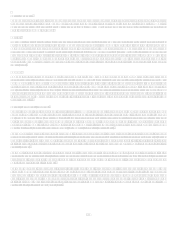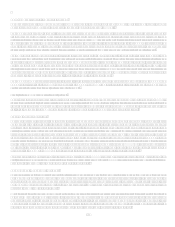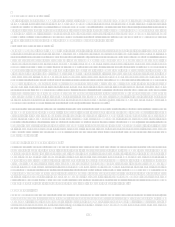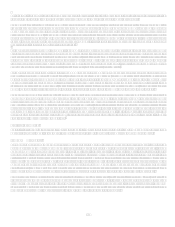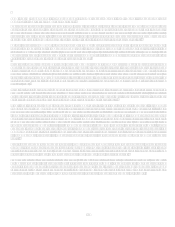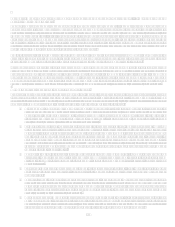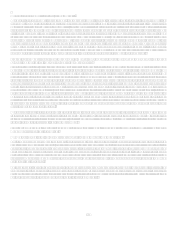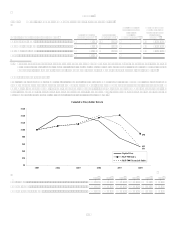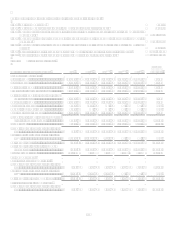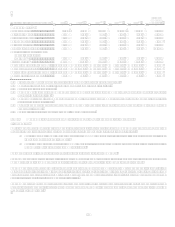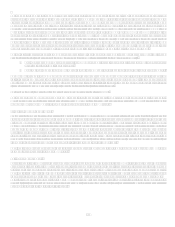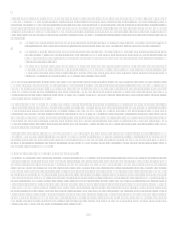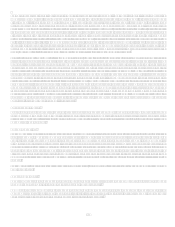Capital One 2008 Annual Report Download - page 41
Download and view the complete annual report
Please find page 41 of the 2008 Capital One annual report below. You can navigate through the pages in the report by either clicking on the pages listed below, or by using the keyword search tool below to find specific information within the annual report. 23
We Face Intense Competition in All of Our Markets
We operate in a highly competitive environment, and we expect competitive conditions to continue to intensify. In such a competitive
environment, we may lose entire accounts, or may lose account balances, to competing financial institutions, or find it more costly to
maintain our existing customer base. Customer attrition from any or all of our lending products, together with any lowering of interest
rates or fees that we might implement to retain customers, could reduce our revenues and therefore our earnings. Similarly, customer
attrition from our deposit products, in addition to an increase in rates and/or services that we may offer to retain those deposits, may
increase our expenses and therefore reduce our earnings. We expect that competition will continue to grow more intensely with
respect to most of our products. Some of our competitors may be substantially larger than we are, which may give those competitors
advantages, including a more diversified product and customer base, the ability to reach out to more customers and potential
customers, operational efficiencies, more versatile technology platforms, broad-based local distribution capabilities, lower-cost
funding, and larger existing branch networks. In addition, some of our competitors may not be subject to the same regulatory
requirements or legislative scrutiny to which we are subject, which also could place us at a competitive disadvantage.
Fluctuations In Market Interest Rates Or The Capital Markets Could Adversely Affect Our Revenue And Expense, The Value
Of Assets And Obligations, Our Cost Of Capital Or Our Liquidity
Like other financial institutions, our business may be sensitive to market interest rate movement and the performance of the financial
markets. Changes in interest rates or in valuations in the debt or equity markets could directly impact us. First, we borrow money from
other institutions and depositors, which we use to make loans to customers and invest in debt securities and other earning assets. We
earn interest on these loans and assets and pay interest on the money we borrow from institutions and depositors. Fluctuations in
interest rates, including changes in the relationship between short term rates and long term rates and in the relationship between our
funding basis rate and our lending basis rate, may have negative impacts on our net interest income and therefore our earnings. In
addition, interest rate fluctuations and competitor responses to those changes may affect the rate of customer pre-payments for auto
and other term loans and may affect the balances customers carry on their credit cards. These changes can reduce the overall yield on
our earning asset portfolio. Changes in interest rates and competitor responses to these changes may also impact customer decisions to
maintain balances in the deposit accounts they have with us. These changes may require us to replace withdrawn balances with higher
cost alternative sources of funding. In addition, changes in valuations in the debt and equity markets could have a negative impact on
the assets we hold in our investment portfolio. Finally, such market changes could also have a negative impact on the valuation of
assets for which we provide servicing.
We assess our interest rate risk by estimating the effect on our earnings under various scenarios that differ based on assumptions about
the direction and the magnitude of interest rate changes. We take risk mitigation actions based on those assessments. We face the risk
that changes in interest rates could reduce our net interest income and our earnings in material amounts, especially if actual conditions
turn out to be materially different than those we assumed.
See Item 7 Managements Discussion and Analysis of Financial Condition and Results of OperationsInterest Rate Risk
Management for additional information.
We May Fail To Realize All Of The Anticipated Benefits Of Our Mergers And Acquisitions
Capital One has engaged in merger and acquisition activity over the past several years. If we are not able to achieve the anticipated
benefits of such mergers and acquisitions, including cost savings and other synergies, our business could suffer. In addition, it is
possible that the ongoing integration processes could result in the loss of key employees, the disruption of each companys ongoing
businesses or inconsistencies in standards, controls, procedures and policies that adversely affect our ability to maintain relationships
with clients, customers, depositors and employees or to achieve the anticipated benefits of the merger or acquisition. Integration
efforts also may divert management attention and resources. These integration matters may have an adverse effect on the Company
during any transition period.
Our recent acquisitions also involve our entry into new businesses and new geographic or other markets which present risks resulting
from our relative inexperience in these new areas and/or these new businesses. These new businesses change the overall character of
our consolidated portfolio of businesses and could react differently to economic and other external factors. We face the risk that we
will not be successful in these new businesses and/or in these new markets.


